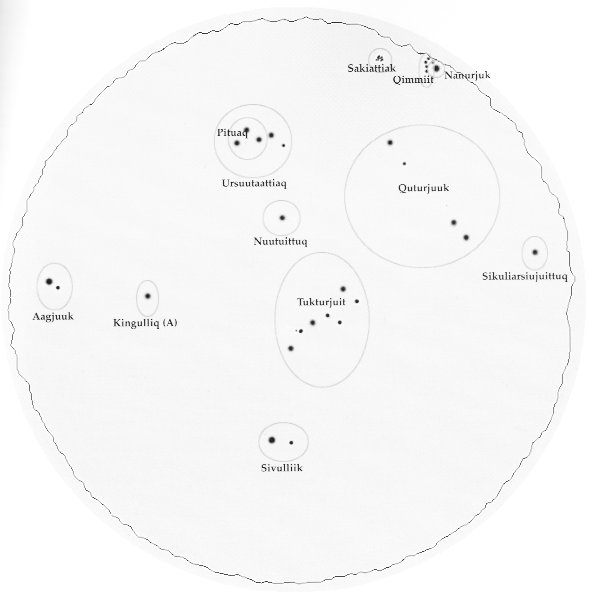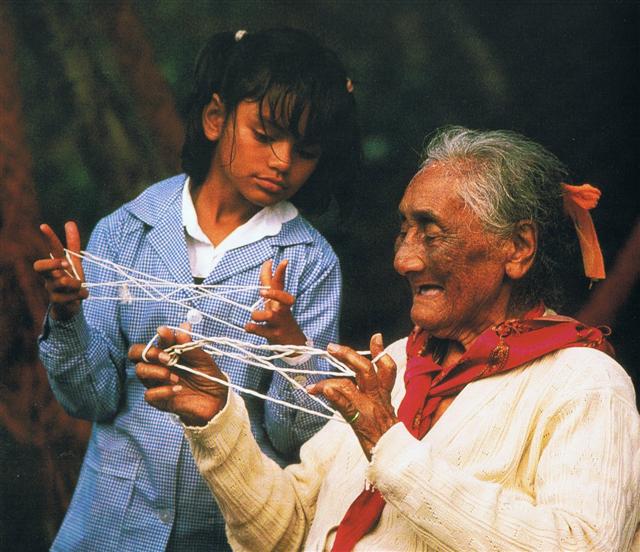We should remember that the Inuit people - living not far from Hawaii - also had rules connected with the time when Sun was close to Mother Earth: ... string games could be resumed after it was clear that the Sun had managed to leave the horizon and was rapidly gaining in altitude: 'Before the sun starts to leave the horizon ... when it shows only on the horizon, ... then string games were no longer allowed as they might lacerate the sun. Once the sun had started to go higher and could be seen in its entirety, string games could be resumed, if one so wished. So the restriction on playing string games was only applicable during the period between the sun's return and its rising fully above the horizon ... ... I knew of two men who lived in another settlement on the Noatak river. They did not believe in the spirit of the string figures, but said they originated from two stars, agguk [= Altair and Tarazed], which are visible only when the sun has returned after the winter night. One of these men was inside a dance-house when a flood of mist poured in ... His two companions rapidly made and unmade the figure 'Two Labrets', an action intended to drive away the spirit of the string figures, uttering the usual formula ... but the mist kept pouring in ...
String games were on Easter Island an important instrument for women:
Men incised glyphs on rongorongo wooden boards, while women taught the images by way of string games (kaikai). In the day sky Sun was king and in the night Moon was queen. I suggest the moon calendar could have been tapu (equally forbidden as string games) when Sun was on his way to return and the morning mists had not yet disappeared. ... To work with threads, strings, and cloth should not be a task for men, they should rather incise signs in wood. The male season is pre-midsummer and the female post-midsummer. The strong Spring Sun is 'eating' (kai) - raising the water from the small puddles up into the sky by way of evaporation - and then it must be returned to the benefit of the young new generation, kaikai. My rule of thumb that double words mean the opposite of the single words evidently holds true ... There was also a Hawaiian night when Moon had cleared Mother Earth: ... The name [Akua] indicates a great Moon, beautiful and well-rounded, because on this night it is separated from the great earth made by Kane [Tane], hence it is that the Moon appears so clear on this night, say the Hawaiian stories. That night and that day are tapu ...
In the Moon calendar of Easter Island Otua was the night which corresponded to the Hawaiian Akua and the creator of the C text has positioned this night (as far as I have been able to perceive it) 184 days after the March equinox:
Perhaps Metoro referred to this night when he said tagata tua ivi, alluding to the time of spring on Easter Island. From June 3 (154 = 7 * 22) to September 21 (264) there are 110 nights:
|




